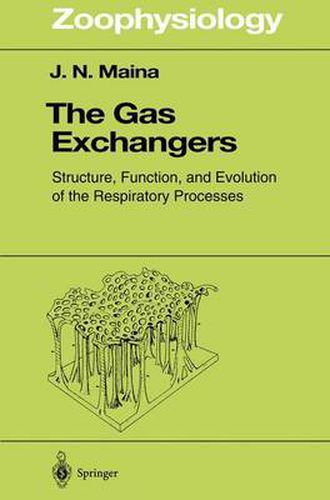Readings Newsletter
Become a Readings Member to make your shopping experience even easier.
Sign in or sign up for free!
You’re not far away from qualifying for FREE standard shipping within Australia
You’ve qualified for FREE standard shipping within Australia
The cart is loading…






This title is printed to order. This book may have been self-published. If so, we cannot guarantee the quality of the content. In the main most books will have gone through the editing process however some may not. We therefore suggest that you be aware of this before ordering this book. If in doubt check either the author or publisher’s details as we are unable to accept any returns unless they are faulty. Please contact us if you have any questions.
Amongst animals, diversity of form and of environmental circumstances have given rise to a multitude of different adap tations subserving the relatively unified patterns of cellular metabolism. Nowhere else is this state of affairs better exem plified than in the realm of respiration . Jones (1972). The field of comparative respiratory biology is expanding almost exponentially. With the ever-improving analytical tools and methods of experimentation, its scope is blossoming to fascinating horizons. The innovativeness and productivity in the area continue to confound students as well as specialists. The increasing wealth of data makes it possible to broaden the information base and meaning fully synthesize, rationalize, reconcile, redefine, consolidate, and offer empirical validation of some of the earlier anecdotal views and interpretations, helping resolve the issues into adequately realistic and easily perceptible models. Occa sional reflections on the advances made, as well as on the yet unresolved prob lems, helps chart out new grounds, formulate new concepts, and stimulate inquiry. Moreover, timely assessments help minimize isolation among investiga tors, averting costly duplication of effort. This exposition focuses on the diversity of the design of the gas exchangers and gives a critical appraisal of the plausible or constrained the evolvement of respiration. The factors that have motivated cause-and-effect relationship between the phylogenetic, developmental, and en vironmental factors, conditions, and states which at various thresholds and under certain backgrounds conspired in molding the gas exchangers is argued.
$9.00 standard shipping within Australia
FREE standard shipping within Australia for orders over $100.00
Express & International shipping calculated at checkout
This title is printed to order. This book may have been self-published. If so, we cannot guarantee the quality of the content. In the main most books will have gone through the editing process however some may not. We therefore suggest that you be aware of this before ordering this book. If in doubt check either the author or publisher’s details as we are unable to accept any returns unless they are faulty. Please contact us if you have any questions.
Amongst animals, diversity of form and of environmental circumstances have given rise to a multitude of different adap tations subserving the relatively unified patterns of cellular metabolism. Nowhere else is this state of affairs better exem plified than in the realm of respiration . Jones (1972). The field of comparative respiratory biology is expanding almost exponentially. With the ever-improving analytical tools and methods of experimentation, its scope is blossoming to fascinating horizons. The innovativeness and productivity in the area continue to confound students as well as specialists. The increasing wealth of data makes it possible to broaden the information base and meaning fully synthesize, rationalize, reconcile, redefine, consolidate, and offer empirical validation of some of the earlier anecdotal views and interpretations, helping resolve the issues into adequately realistic and easily perceptible models. Occa sional reflections on the advances made, as well as on the yet unresolved prob lems, helps chart out new grounds, formulate new concepts, and stimulate inquiry. Moreover, timely assessments help minimize isolation among investiga tors, averting costly duplication of effort. This exposition focuses on the diversity of the design of the gas exchangers and gives a critical appraisal of the plausible or constrained the evolvement of respiration. The factors that have motivated cause-and-effect relationship between the phylogenetic, developmental, and en vironmental factors, conditions, and states which at various thresholds and under certain backgrounds conspired in molding the gas exchangers is argued.